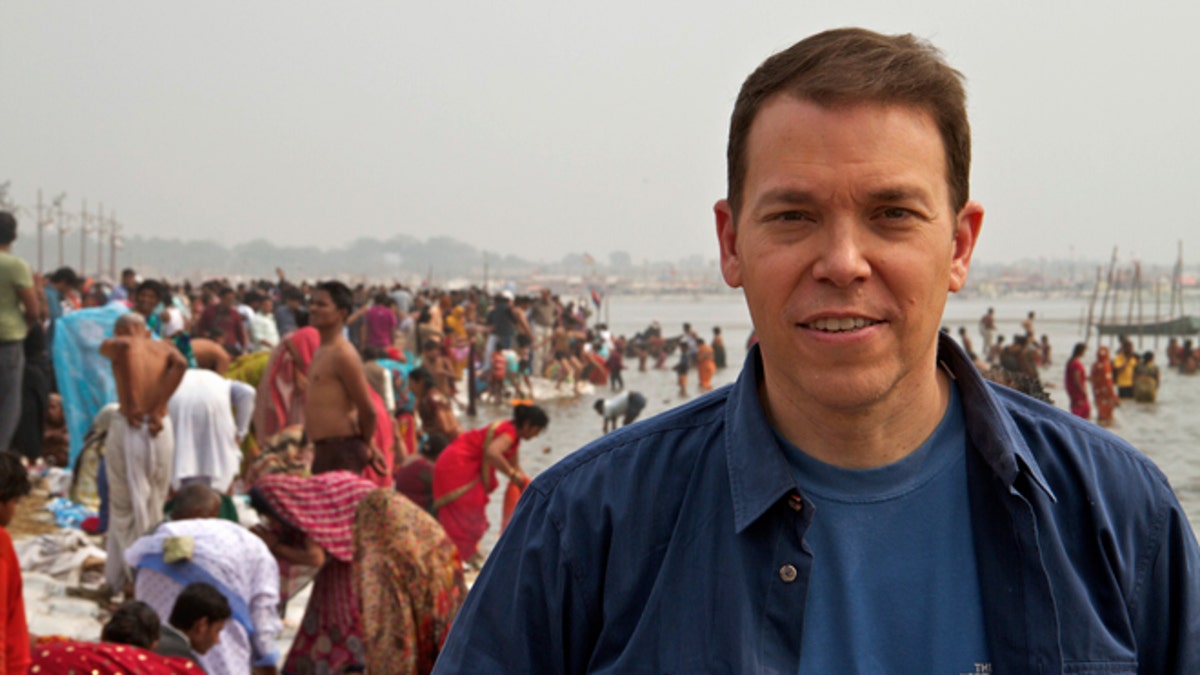
Author, "Sacred Journeys" host Bruce Feiler (Khishnendu Bose)
By any measure, organized religion is challenged these days. Attendance is down, membership is down, even the number of people who identify as religious is down.
But in the midst of this downward trend, one expression of religious intensity is up. And not just up, but way up. What’s this mystery activity that more and more people are participating in?
Pilgrimage.
In September, the United Nations held the first ever International Congress on Tourism and Pilgrimages. At the event, held in Santiago de Compostela in Spain, the organizers released a study that said a third of all tourists worldwide annually are pilgrims.
[pullquote]
The U.N. puts the total number of people going on a pilgrimage each year at 330 million. That means nearly a million people every day are leaving their homes and going on a spiritual exploration.
Last year, I went on six of the biggest and most important of these pilgrimages in the course of 12 months. I bathed with 100 million people in the River Ganges, walked along the Jesus Trail in the Galilee, and trekked on an 750-miles Buddhist trail in Japan.
My travels, over 120,000 miles, were part of a new television series, “Sacred Journeys with Bruce Feiler,” that tells the story of the growing power of pilgrimage in the contemporary life.
Each hour of the six-hour series focuses on American pilgrims making one of these historic journeys. Some of these seekers don’t fit the stereotype of spiritual travelers.
[image]
Last May I traveled with 40 wounded warriors from Iraq and Afghanistan to bathe in the sacred waters of Lourdes, France. Some of these genuine heroes had legs blown off, were blinded, or suffered other serious injuries. A sniper from Kansas had a grenade go off in his face.
On this extraordinary journey, never before seen on film, these soldiers traveled from Walter Reed Medical Center in Washington, D.C., to the small town in southwest France, where in 1858 a peasant girl named Bernadette Soubirous claimed to have dozens of encounters with the Virgin Mary. Some of the soldiers were in wheelchairs, others were being pushed on hospital gurneys. They had already received excellent medical care, but they still longed for something.
They needed healing.
As Captain Fr. Anselmo Hernandez, Chaplain, U.S. Army, said to me, “What these soldiers have told me is they’re not necessarily looking for that cure but that healing, that internal healing. I usually tell them, when you arrive just be open, allow your heart, your soul, your mind, your spirit to open up to what God has prepared for you.” (To see the complete episode visit www.pbs.org/sacredjourneys.)
That sense of openness captures the spirit of many pilgrims. Pilgrimages are never easy. They’re tough physically, they’re tough mentally. And yet when you arrive at the destination, often with a group you’ve bonded with along the way, a pilgrimage can be magical like few gatherings on earth.
At a time when organized religion is more threatened than ever, pilgrimages are more popular than ever because they offer pilgrims the chance to experience firsthand some of the most sacred places in the world and decide for themselves what they really believe. They allow pilgrims to escape the ordinary and encounter the extraordinary.
It’s a harder way to experience faith, perhaps, but ultimately it can be more fulfilling. And it’s one step in the direction of making religion a viable force in the digital age.
